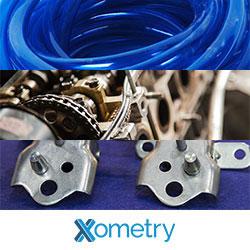Local Motors: Driving Innovation with Micro-Manufacturing
MIT's Foundry software is the 'Photoshop of 3D printing'
Blockchain plus 3D printing equals 'smart manufacturing' and Ethereum you can touch
3-D-printed robots with shock-absorbing skins
Fujitsu to sell 'smart' factory systems in China
OMRON to Introduce 15,583 Models in 7 Categories to World, Second Wave of FA Devices Built on Common Design Platform
Metamaterial Mechanisms
Adidas Shows Off First Shoe Made In Its German Smart Factory
How to Attract Millennials to Advanced Manufacturing Jobs
Home 3D Printing 'Just Not There Yet' Admits MakerBot
Bosch, SAP team up for Industry 4.0
New modular AM 'smart factory' from Concept Laser decouples pre-production and production
Peugeot Teams Up With 3D Printing Startup for Parts and Possibly Full Cars
Industry 4.0: Cloud driving the rise of machines
Safety solutions for intelligent human-robot collaboration
Records 946 to 960 of 1150
First | Previous | Next | Last
Featured Product

